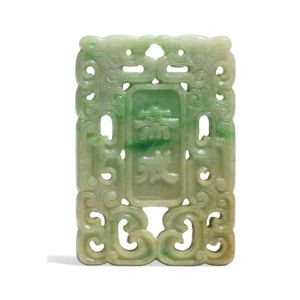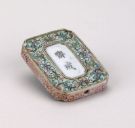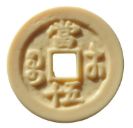Materialistically misleading
You are about to indulge in a story that is filled to the brim with symbols. But before doing that, there are two points that I feel are worth mentioning here.
This is one plaque, not two. Presumably one day 3D images will become the new normal, but until then we will struggle with how to capture an object in the best way possible. Duton's, the auction house that offered this plaque (sold for 30K Euro in 2018), decided to merge both sides of the plaque into one single image. They left the gilded edges out of the pictures. Images of objects that we have no way of seeing and feeling in real life may draw us near to reality, or push us away from it.
For example, the image above shows a plaque in the collection online at the British Museum. It only shows us the side that bears the Chinese inscription, not the Manchu one. I wonder why. To me, this seems symptomatic; just one of the many instances where the position of Manchu and Manchuness in Qing China (ruled by a Manchu court) is being downplayed.
About the material: if you thought you were looking at a piece of cloisonné here (the technique where one applies enamel paint on metal), then the palace artisans can consider their job of masking the ceramic nature of this plaque well done. In a broader perspective, humans are creative in creating optical illusions - see the faux ivory coin above. We imitate for the sake of creativity, but also as a way to deceive or to cut budget.
Now that we have set these records straight, let us move ahead and dive into this plaque's usage of symbolic language. If you want to know more about abstinence first, then go to the related object first.
Related things to this object


